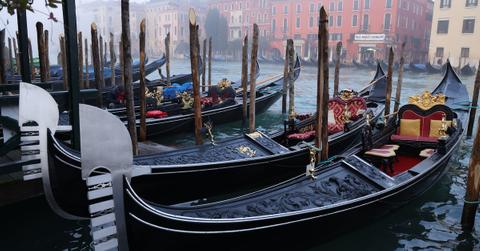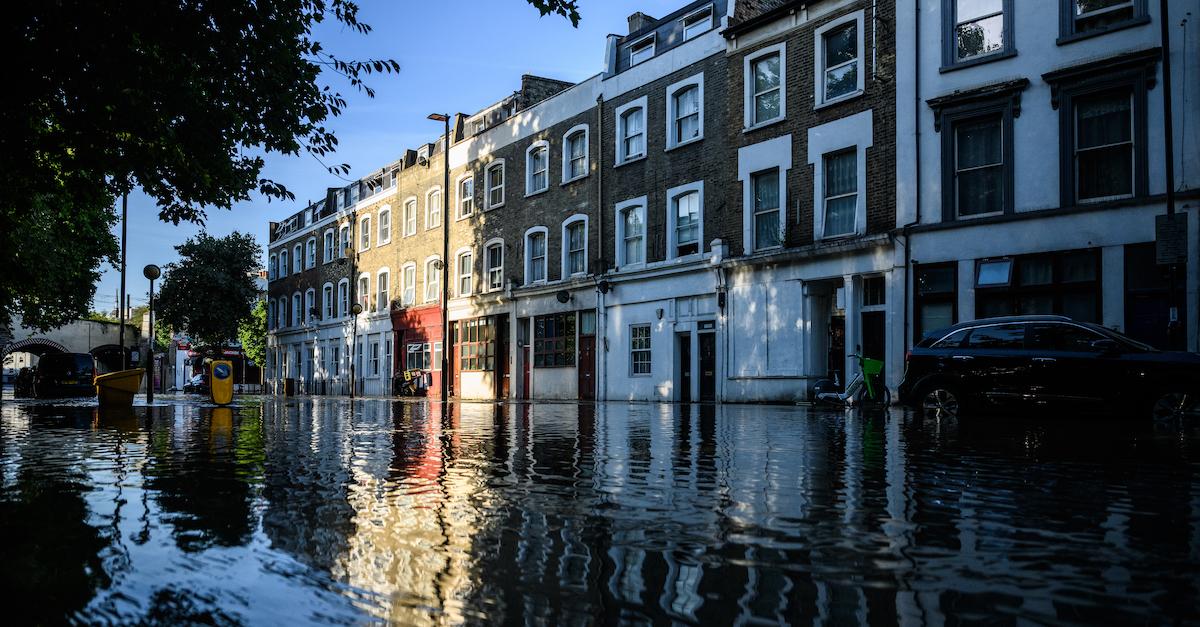Gondolas Grounded and Canals Run Dry Amid Venice’s 2023 Drought
Updated Feb. 23 2023, 1:57 p.m. ET

Only three months after being submerged by flooding waters, Venice is kicking off 2023 with a drought.
Snow has been few and far between in the Italian alps, and Lake Garda's water levels have fallen to record lows. Meanwhile, things in Venice aren't much different. Water levels in the city's iconic canals have drastically plunged. As a result, gondolas and water taxis are unable to conduct business as usual.
READ NEXT: “Cop City” Has Spawned a National Fight to Protect an Atlanta Forest
“Nothing has changed since 2022,” Italian Meteorological Society president Luca Mercalli stated, via The Guardian. “We are still in a situation of deficit … let’s wait for the spring, which is usually the rainiest period for the Po valley. There is a good possibility that rainfall in April and May can compensate – it’s the last hope. If we have no spring rain for two consecutive years then it would be the first time this has ever happened.”
“We are in a water deficit situation that has been building up since the winter of 2020-2021,” added Italian National Research Council climate expert, Massimiliano Pasqui, via The New York Post. “We need to recover 500 millimeters in the northwestern regions. We need 50 days of rain."
What to know about Venice's 2023 drought:
Water levels in Venice's famous canals are at their lowest in 15 years, per CNN, thanks to a combination of factors — which mostly relate to climate change. The Alps have received little snow this winter, while lower elevations have received almost no rain. Changing sea currents, an anticyclone, unseasonably warm temperatures, and a full moon also also reportedly contributing factors.
The River Po, which runs through Italy, is at a 61 percent deficit based on the average for this time of year.
But tourism isn't the only industry that's suffered as a result of Venice's drought. According to The Independent, the city’s water ambulances can't run with the water levels being as low as they are.
This past weekend, the canal's water levels were at -65 centimeters (about 25.5 inches). But because the ambulances need to be at about -60 centimeters (about 23.5 inches) minimum to operate, they could face serious problems in the case of a dire emergency.
“Our operators are often forced to stop the vehicles at a certain distance from the destination point and continue on foot, in many cases with a patient that must be carried in their arms,” Paolo Rosi, who runs Venice's emergency services, stated as per The Independent.
However, meteorologists are now predicting some local precipitation, as well as snow in the Alps, within the next few days, giving Venice residents and environmentalists alike a glimmer of hope.

Is Venice still sinking?
Although Venice isn't being consumed by its surrounding waters at this moment in time, Venice could still be under water within the next few years.
Because water levels are continuously rising — thanks to melting glaciers and erosion — the quaint Italian city is facing the risk of being completely submerged within our lifetime.
And with extreme weather events on the rise, unexpectedly large amounts of rain could also submerge Venice, without much warning.
While we hope this doesn't happen any time soon, our fingers are crossed for a little rain — Venice could certainly use it.